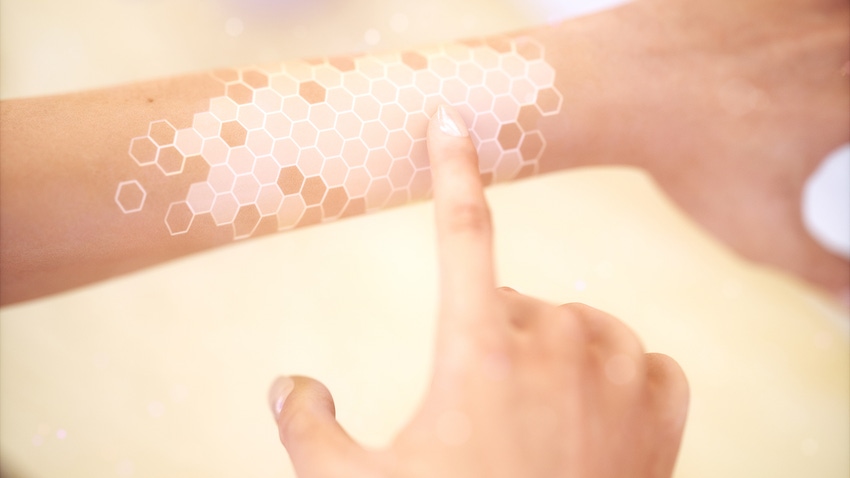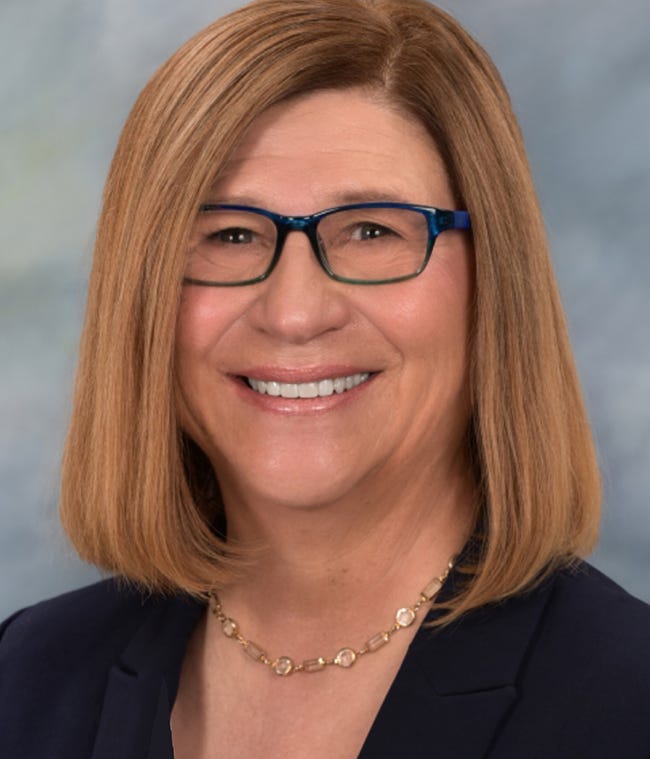Smart Bandages Set to Revolutionize Wound-care Technology
Smart-bandage technology leverages medical polymers, medication, stimulation, sensors, and real-time feedback to create an ideal healing environment.
January 17, 2024

At a Glance
- R&D focused on multifunctional smart bandages addresses challenges of healing chronic wounds
- Material selection for wound dressing is crucial
- Various polymer types are customized to create primary and secondary wound dressings
Bandages come in all shapes, sizes, degrees of stickiness, colors, and designs, but they all share a common trait — they aren’t very “smart.” That is changing. Joanne Moody, president of Zeta Scientific LLC, will reveal advances in smart bandage technology at next month’s MiniTec conference track presented by the Society of Plastics Engineers (SPE). The conference is part of the Informa Markets Engineering (IME) West event in Anaheim, CA, on Feb. 6 to 8, 2024.
Moody, one of four speakers in a session devoted to new product designs enabled by medical polymers, has 25+ years’ consulting experience in adhesives, plastics, coatings, and joint design. Zeta Scientific’s clients range from startups to Fortune 500 companies across the medical device, industrial, and consumer industries. Moody excels in moving products through development phases, including requirements, risk analysis, materials selection, testing, process development, scaleup, and transfers into low- to high-volume manufacturing. Ahead of the session at IME West on Feb. 6 at 10:15 a.m. in room 201ABCD at the Anaheim Convention Center, Moody agreed to share some of her insights on smart bandages with PlasticsToday. Here is our conversation.
Please describe how smart bandages differ from conventional bandages?
Joanne Moody: Conventional wound dressings have the benefits of an established practice, are well understood how to apply and manage, and are low-cost. But they have some well-known drawbacks, as well. Cotton gauze can dry the wound, stick to the wound, and then cause pain and damage upon removal. Smart bandages aim to create an ideal healing environment, which keeps the wound moist, prevents infection, aids in drainage, reduces odor, and provides comfort. Advanced materials include polymers, bio-active additives, antimicrobials, and multi-layers. Research and development are working toward multifunctional smart bandages with polymers, medications, stimulation, sensors, and real-time feedback to address the challenges of healing chronic wounds like diabetic ulcers.
Your presentation focuses on the role played by medical polymers. What are the primary considerations involved in material selection? What factors should be considered when selecting a wound dressing material?
Joanne Moody: Material selection for the wound dressing is crucial and based on an evaluation process. First, a systemic review looks at the patient's age, care management, health status, living habits, genetics, and psychological state. Next, local factors such as the wound environment, infection, moisture, dead tissue, blood flow, and trauma are examined. Based on these factors, the type of primary dressing that contacts the wound and secondary dressing that protects or secures the bandage can be selected. Routine inspection and dressing changes are needed; often, different dressings will be applied as wound healing progresses. Unfortunately, some wounds can become chronic and non-healing.

Zeta Scientific President Joanne Moody will discuss advances in smart bandage technology at IME West in Anaheim, CA, next month.
What polymer types are most commonly used in these applications?
Joanne Moody: Various polymer types are customized to create primary dressings in direct contact with the wound and secondary dressings that cover the primary dressing. Key properties are biocompatibility, flexibility, comfort, removal of exudate, moisture transmission, and protection against infection. Here are a few commonly used polymers:
Polyurethanes are widely used in foams and transparent dressings and can be both a primary and secondary wound dressing. In the future, polyurethane could be printed conductive ink circuits for electronics.
Polypropylene and polyethylene nonwovens are used on secondary dressings and wraps.
Silicones are hydrophobic and flexible, made into forms such as films, gels, and foam.
Polyvinyl alcohol crosslinked and converted to hydrogels (with >90% water) keep the wound moist while healing. Hydrogels offer potential smart bandages because they can be produced to be conductive and modified with antimicrobials.
Superabsorbent polymers (SAPs), such as sodium polyacrylates, are used in wound dressings to quickly absorb 20 times by weight of fluids.
Hydrocolloids, often composed of carboxycellulose combined with gelatin, pectin, elastomers, and adhesives, absorb wound exudates for seven days.
What is the current state of the art in smart bandages? What do you see as the main challenges in developing smart bandages today?
Joanne Moody: A smart bandage is a technologically advanced medical dressing that monitors wounds, delivers medication, and communicates data for enhanced healing. It is a field that is evolving rapidly. Research and development at several universities show promising results. One case study involving diabetic animals showed that the prototype improved healing with a custom hydrogel, stimulation, and drug release, along with monitoring the pH and temperature of the wound.
The challenges with smart bandages include ensuring their cost-effectiveness, scalability for mass production, compatibility with different wound types, addressing regulatory approvals, and maintaining patient privacy and data security, all while proving their clinical efficacy and superiority over traditional wound-care methods.
Are there any future developments in this field that you are looking forward to?
Joanne Moody: In the future, smart bandage development will capitalize on advancements in electronics, miniaturization, stretchable electronics, sensors, and energy harvesting, which could eliminate batteries. Integrating antimicrobials and various bioactive ingredients aims to reduce reliance on antibiotics and move toward topical treatments to prevent infection. Long-term studies on Negative Pressure Wound Therapy (NPWT), which uses a vacuum to remove excess fluids, show significant improvements in deep wound healing, and usage is growing.
What are the two or three key takeaways that you aim to convey to conference attendees?
Wound healing is a complex multi-stage process that requires different treatment modalities at different phases, especially if it fails to progress. It’s an increasingly important aspect of medical care for our aging population and for managing an increase in chronic wounds, in particular diabetic ulcers.
Personalized evaluation and management of wound care is essential to improve outcomes.
Smart bandages offer a paradigm shift in wound-care technology with advanced materials, therapeutics, real-time monitoring, and feedback to improve outcomes. However, the approval of these bandages is anticipated to take several years, given the device's complexity and potential regulatory changes.
Running from Feb. 6 to 8 in Anaheim, CA, IME West includes the co-located Medical Design & Manufacturing (MD&M) and Plastec West trade shows and several conferences, including Discover.Engineer.Build and SPE/MPD MiniTec. The MiniTec sessions begin a day early, on Feb. 5, and run through Feb. 6.
Go to the IME West website for extensive show and conference information and to register to attend. Visit the Zeta Scientific site to learn more about the company’s portfolio of services for medical device OEMs.
About the Author(s)
You May Also Like




